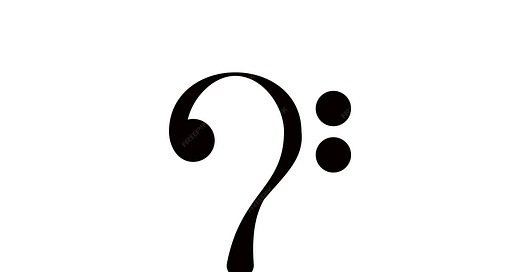Accessible Music Sampler: "Burning of the Midnight Lamp" by the Jimi Hendrix Experience & the remake by Rotary Connection
A Remix / Rewind from my March 2023 Substack
The following is a remix / rewind - a repost from my Substack in March 2023 to, in part, commemorate the Disabled Day of Mourning (1 March). It appears below with several key edits. I wrote it originally as part of a course syllabus, for which I engaged in my penchant for mixing arts with social sciences. This was a lesson for me more than I could have imagined. Read the postscript for why this was so.
In 2020, I was assembling my first graduate level course in social science. Because I strongly believe in using the arts to teach social sciences, I included a song to discuss research methods. I cited a song that was key to my reasoning in a doctoral paper on research redesign. The result was a study in musical redesign, as the song was discussed using the original and a remake.
To design a course is a collaborative undertaking. One collaborator posed a challenge to my artistic social science approach. The director of student disability services questioned my use of songs, wondering how I would explain the music to a Deaf student.
I contemplated on that until I remembered how I came to choose those two songs. I recycled two paragraphs from the aforementioned paper to illustrate what happens when you substitute one research method for another. To me, these descriptions served to provide portraits of the two deeply contrasting approaches to the song. I wrote them on the premise that a reader would be unfamiliar with neither.
The director was satisfied with my response. The songs stayed in the curriculum, and the lesson is printed below. To be sure, more research is needed on how vivid descriptions work in sharing, receiving, and responding to music with Deaf and Hard of Hearing audiences-and performers. As to the latter, we must also always acknowledge Deaf and Hard of Hearing musicians, singers, dancers, and sound engineers.
The TeachRock curriculum on the history of the enthusiastic Deaf fanbase of the Grateful Dead offers a treasure trove of clues through the fans’ story.
“Burning of the Midnight Lamp” by the Jimi Hendrix Experience (1967/1968) is a plaintive song with metallic instrumentation, played with a slow beat masked by the intensity of the instrumentation. In the Jimi Hendrix Experience performance, the song begins with a wah-wah distorted electric guitar superimposed on a harpsichord before his mournful proto-rap begins, and intertwines throughout the track, the riff repeating the effect before each verse with a slowdown as he chants “Loneliness is such a drag” twirling high pitched lead guitar counterpoints the aforementioned instruments with distorted wavy rhythm guitar. A female gospel choir counterposes the tightly rhythmic maelstrom with ethereal voices crescendoing through the verse and riffing loudly through the chorus, even doing a “solo” during the instrumental break. After the last verse, the song channels the pain of the love lost until the instrumental elements mute out one by one until only the distorted guitar remains.
The version performed by Rotary Connection (1969) shows an appreciation for the symphonic tone of the original, as reimagined by arranger Charles Stepney. In their interpretation, the choir - of male and female voices - emerges with the song’s opening and serves as the verse-chorus marker parallel to Hendrix’ guitar-harpsichord combination. Here, the orchestra is the underpinning for a rock band notable for its strong drums and electric guitar that amplifies the sitar sound that is more muted in the original, which inverted the staccato electric guitar of the original here. Punctuating each choral emergence is the whistle register note sung by Minnie Riperton. Her signature high pitch soars over the instrumental break, singing the gospel choir’s melody this time, as the psychedelic soul choir gradually rises behind the voice. Instead of the third verse, the first is repeated at the end, before the choral wash repeats the riff until fade.
Postscript: Later in 2023, for an undergraduate course In Puerto Rican and Latino Studies, I like to include a songlist with a broad representation of nationalities and genres including those not considered Latin). I knew that while it would be a major undertaking, I wanted to be sure that as much of it as possible would be accessible. I adapted the approach that I used for “Burning of the Midnight Lamp” to the songs I included. After the lesson, an American Sign Language interpreter warmly thanked me for what I did.
Cover image “Bass clef key note music with question mark logo design” from Freepik.



I know from past experience that people who are hard of hearing and even profoundly deaf can get a lot of enjoyment from music. I once volunteered at a residential home for people with disabilities and when I took my guitar in to play, a man who was profoundly deaf would come and sit with his hand on the guitar and feel the music that way. I also worked with a woman who was profoundly deaf and was a huge fan of Wings. We all experience music in our own way.
Thank you, Julia, for your wonderful words! I appreciate what you said: "We all experience music in our own way."